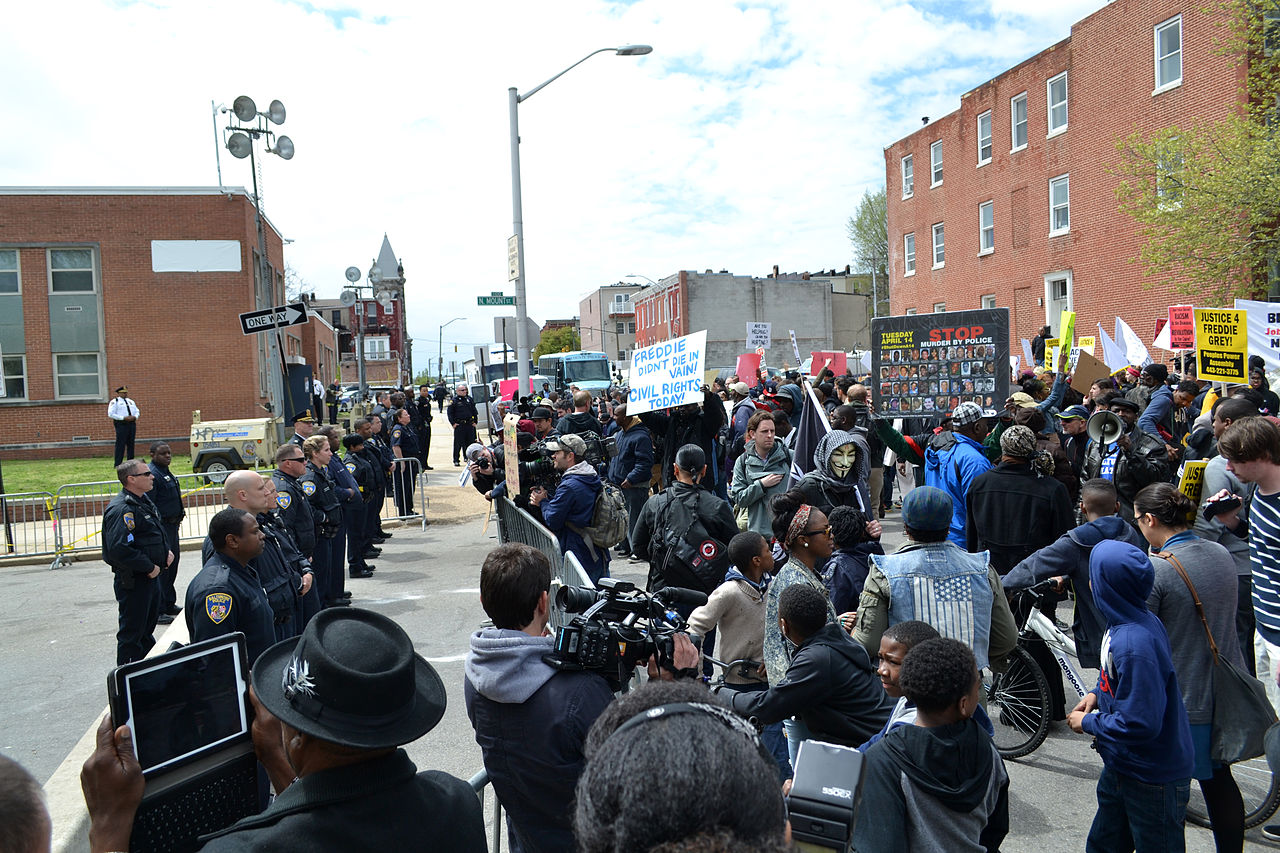Views expressed in opinion columns are the author’s own.
Last week marked the three-year anniversary of the Baltimore uprising, a series of events following the death of Freddie Gray that propelled Baltimore into the national spotlight. On April 27, 2015, students and police clashed near Mondawmin Mall in West Baltimore. The images of police in riot gear awaiting students at the transportation hub of the city are still chilling to this day.
There are many concurrent narratives orbiting discussions of the uprising, most of which follow the same loose progression. Members of the community expressed too much outrage, tensions rose, violence ensued, the police attempted to ‘keep people under control,’ then everyone went home and the city moved on. This narrative excludes many of the structural forces at play, one of which is the notorious Baltimore Police Department.
[Read more: Baltimore’s police corruption trial shows why we need Black Lives Matter]
To further explore the role police had in escalating the conflicts in Baltimore, a review of what occurred in the city — Mondawmin specifically — is needed. First, the BPD got wind of a rumored “purge” beginning at Mondawmin Mall being planned by students. This idea fell flat when only about 70 to 100 students showed up.
The response, however, was to deploy hundreds of police officers in riot gear and to shut down all trains and buses traveling in and out of Mondawmin, a huge transportation hub, trapping students with no way to leave. Unsurprisingly, tensions rose and violence occurred. To this day, no one in the city of Baltimore has been held responsible for the decision to shut down the buses.
Johns Hopkins University professor and Baltimore resident Lester Spence has affirmed the importance of the events that occurred in Mondawmin to the larger conflict in Baltimore, referring to Mondawmin as “Ground Zero of the rebellion.” Spence elaborated upon his aim, hoping to “articulate a more structural narrative that disavowed the idea that the problems that day were caused by kids as opposed to the bigger pictures of economics and political violence.”
Many members of the Baltimore community have echoed the need to shift the paradigm through which we think and speak about the uprising, as the dominant view of the violence is largely predicated on racialized ideas of criminality — take, for example, then-mayor Stephanie Rawlings-Blake’s use of the word “thugs” to describe protesters, or the pervasive notion of senseless acts of violence.
Moreover, the city of Baltimore and BPD’s failure to take responsibility for their actions speaks to a larger culture of evasive, reactionary policies and the need for transparency with the communities they claim to serve.
This debate about transparency is not new. Just this past winter, Baltimore made national news again, in light of the Gun Trace Task Force trial, which exposed the extent to which corruption imbues all levels of the department. In response to the trial, both state Attorney General Brian Frosh and now-mayor Catherine Pugh have spoken about the need to re-examine the seemingly nonexistent checks on the city’s police department.
[Read more: Why does Larry Hogan offer Amazon billions while Baltimore schools freeze?]
As the Baltimore Sun editorial board noted, “Police officers are public employees. They act on the public’s behalf, and it is the public’s business when they commit misconduct. Just as we have the right to know how much we pay them, we also should have the right to know when they are accused of wrongdoing, how those allegations are investigated, whether they are sustained and what consequences flow from them.”
Many states across the country make the disciplinary records of police departments public. Maryland is not among them. As the uprisings and the overarching culture of policing in Baltimore have demonstrated, demanding that officers be held to the laws they claim to enforce is necessary. This would not only allow citizens to understand the state of the police department, but also allow them to reflect on the ways in which they frame and understand events — like the uprising.
Sarah Riback is a sophomore English and sociology major. She can be reached at riback.sarah@gmail.com.



